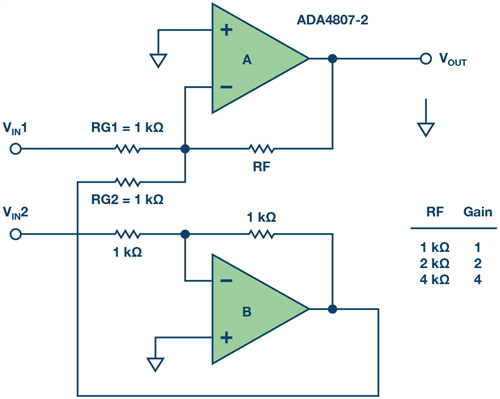Dear TI experts,
My customer wants to make mono signal (sound) from different signal.
They found the reference from google, please see the schematic below ;

RF gain is 1. (1kohm)
Vin1 and Vin2 would be the different signal from audio codec (Cirrus Logic), and finally They can make single signal through Vout.
Do you think this would be work? And If so, Can my customer use OPA2310 for this purpose?
It is okay that you suggest other OP amp parts for this, and also good for recommend other schematic or resistor value in the schematic.
Please check this issue. Thanks.
BEst regards,
Chase


